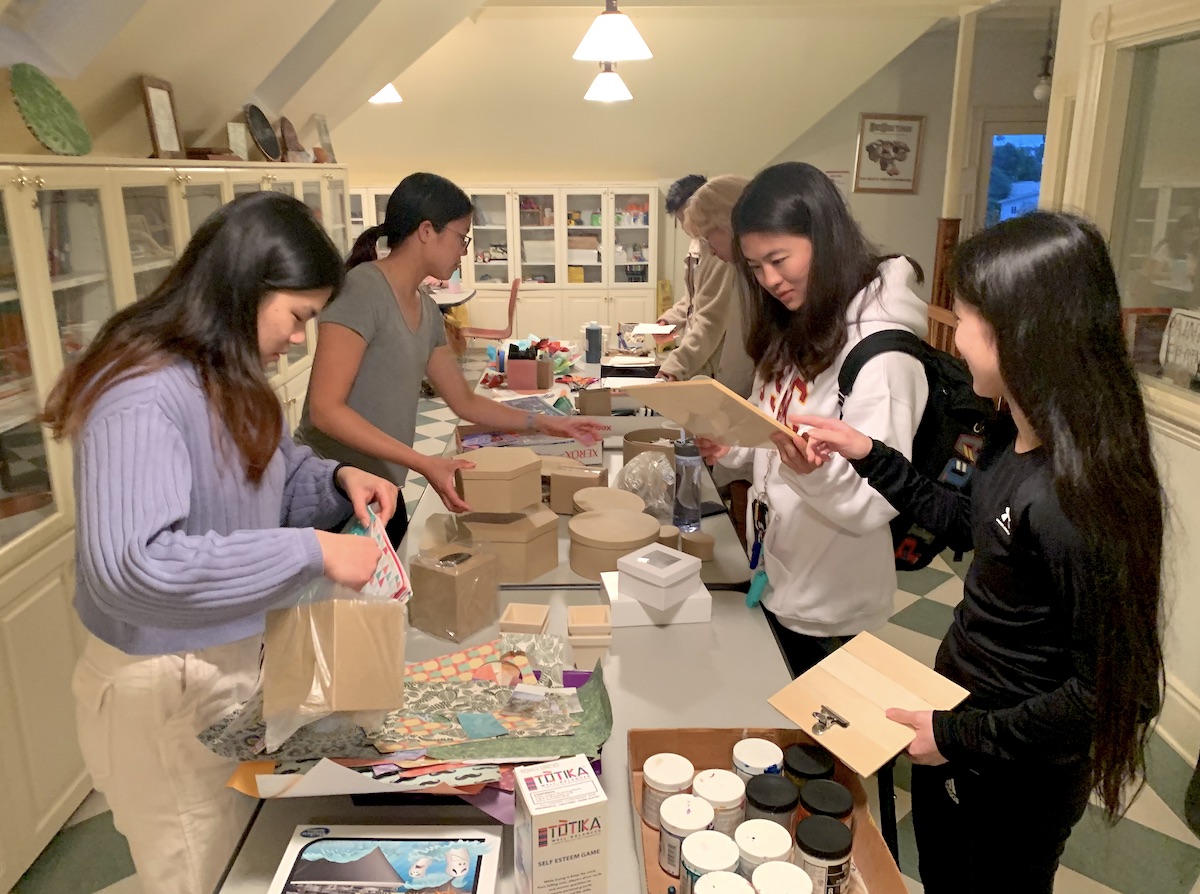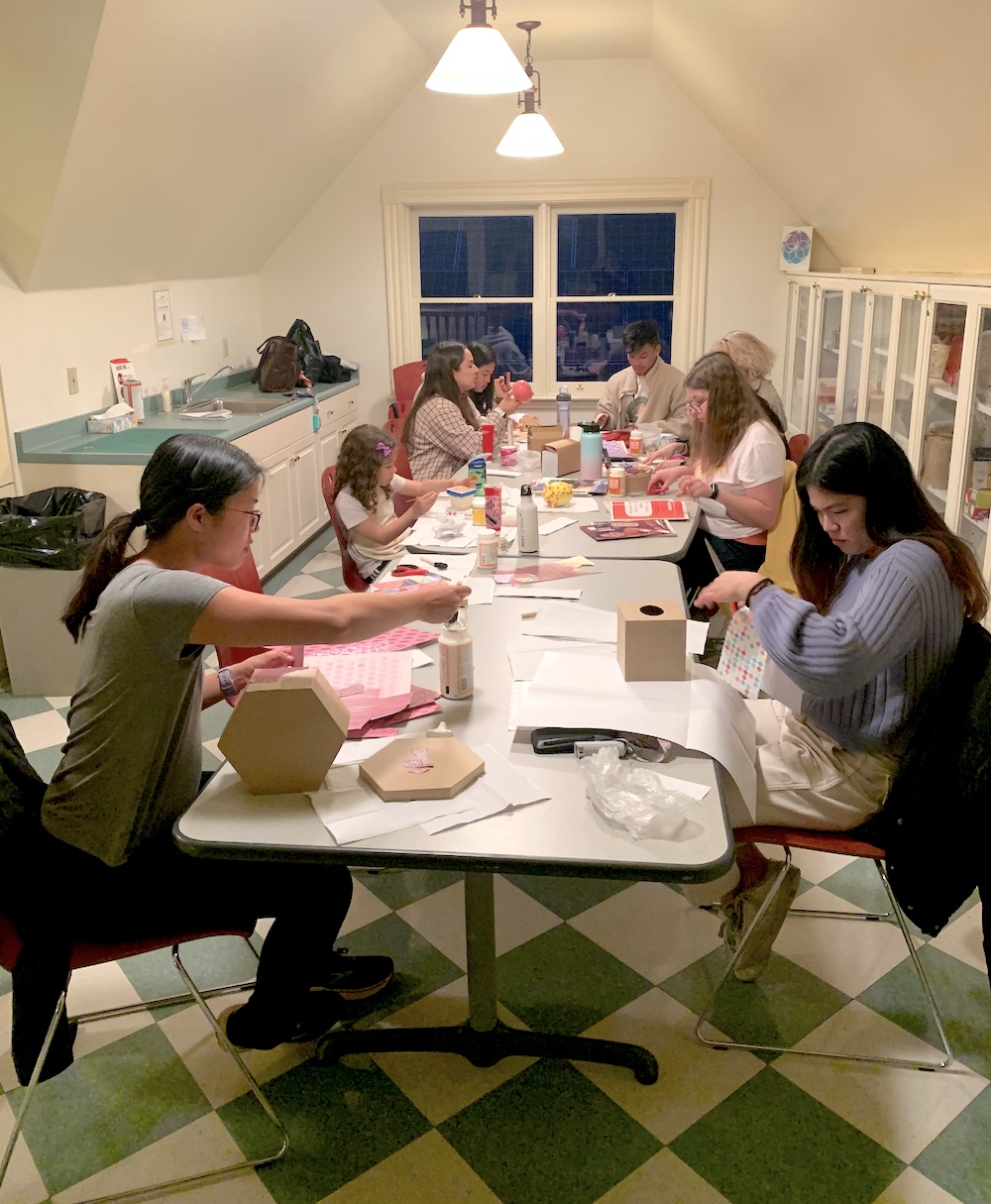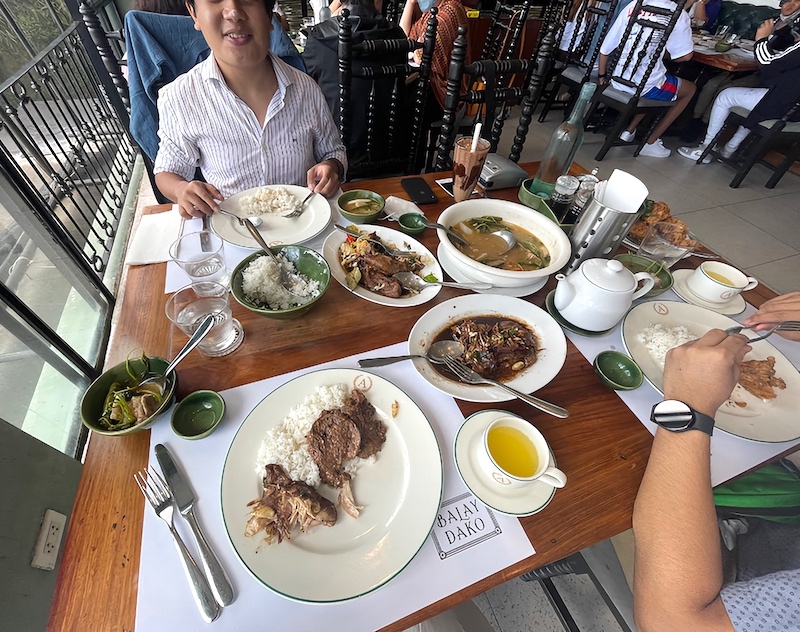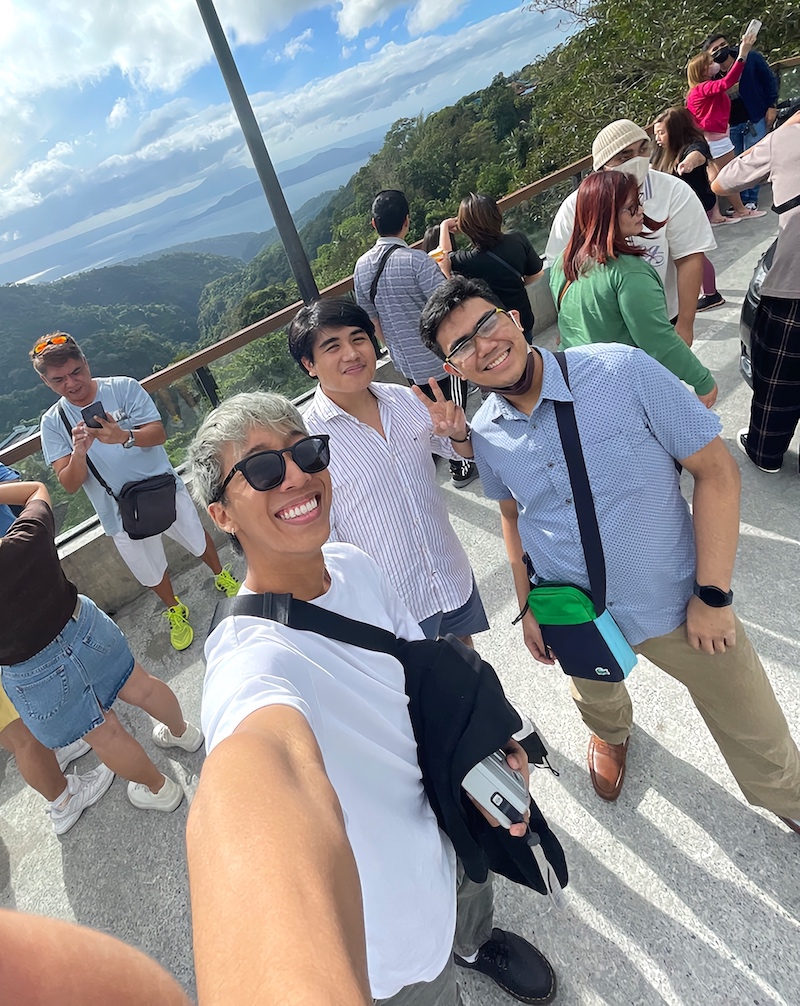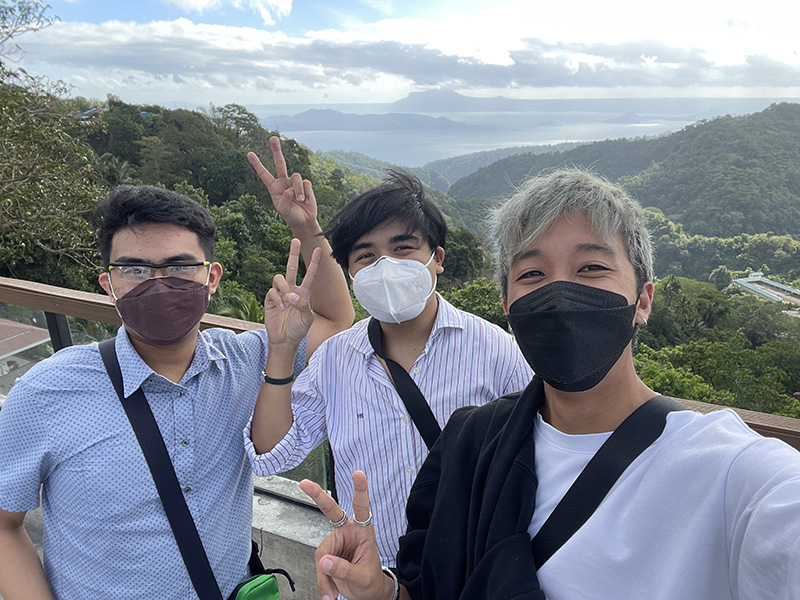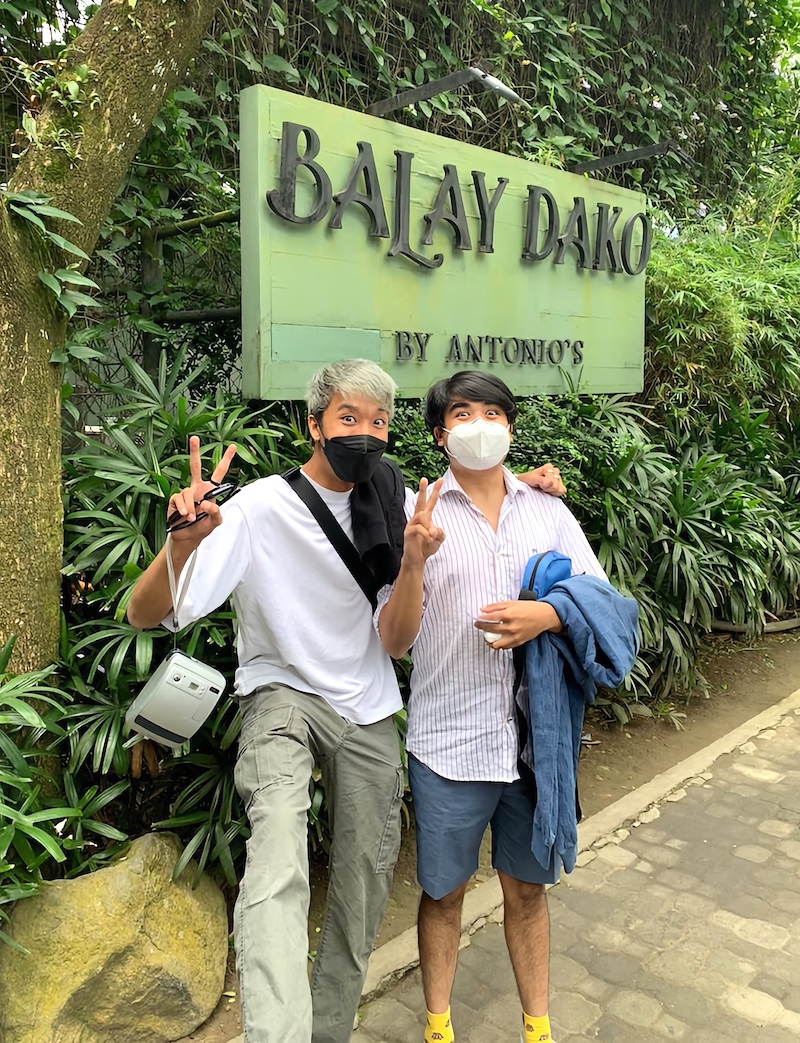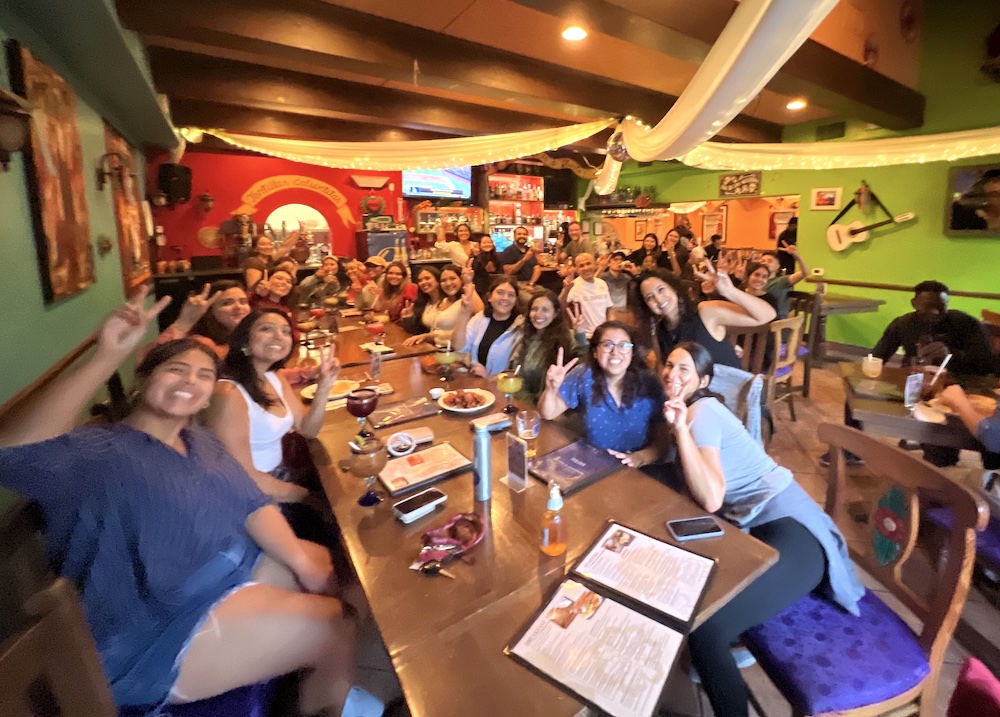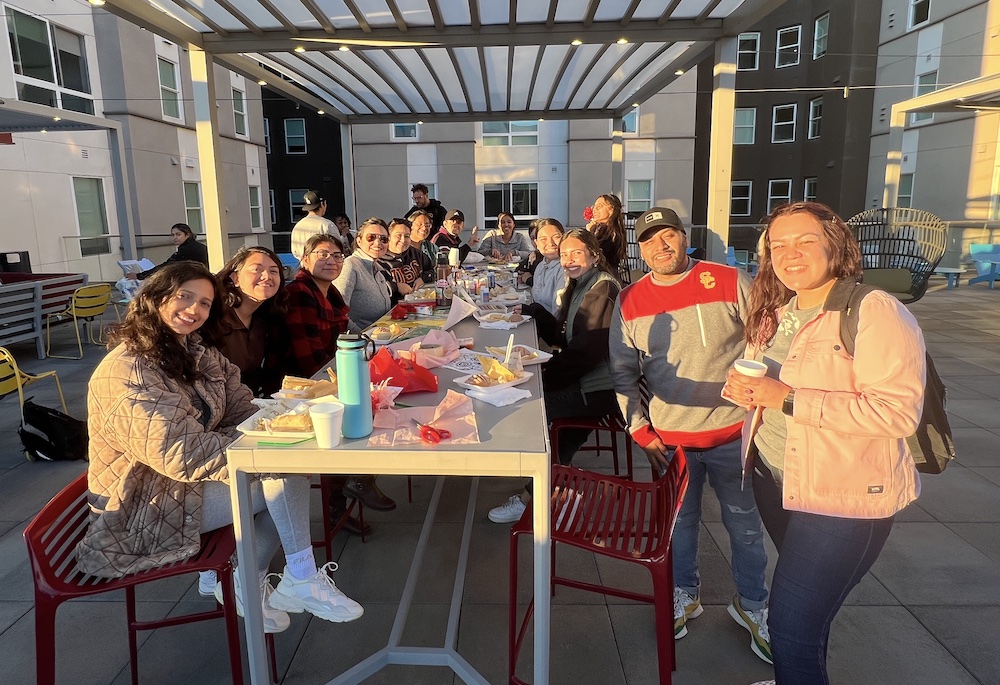Student Blog
Getting Involved
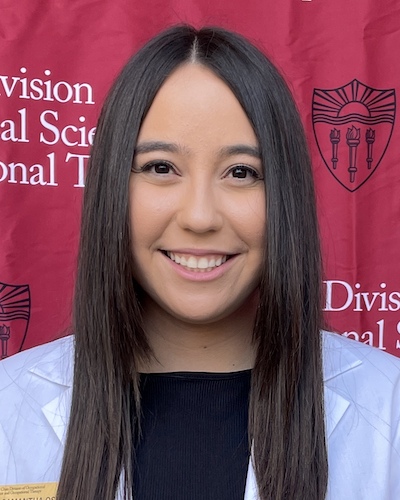
Trojan Spirit ⟩
December 3, 2023, by Samantha
Community Getting Involved School/Life Balance Videos
Hello! My name is Samantha Osuna. I’m in my second year of the Entry-Level OTD program & fifth at USC as a student in the Accelerated Bachelor’s to Doctorate program. As my fifth football season as a Trojan was coming to an end, I spent some time reflecting on the beauty of college football & the Trojan spirit that makes USC football games unique & exhilarating. I realized that this Trojan spirit–which represents the resilience, determination, & indomitable will of USC students on the field & in the classroom–is something I’ve cultivated over the last four & a half years or so. I know that not everyone in the Chan Division has had the same access that I have had and that American football may not be everybody’s cup of tea, but I do believe that USC game day has something to offer everyone, from tailgating to watching the band. It is the ultimate representation of Trojan spirit & the perfect way to share about it with others through a vlog! The 2023 football season may be over, but it’s never too late to embrace the Trojan spirit &, as always, Fight On!
⋯
The Pre-OT Club Gets Crafty ⟩
April 3, 2023, by The Pre-OT Club
Community Getting Involved School/Life Balance What are OS/OT?
Hello world!
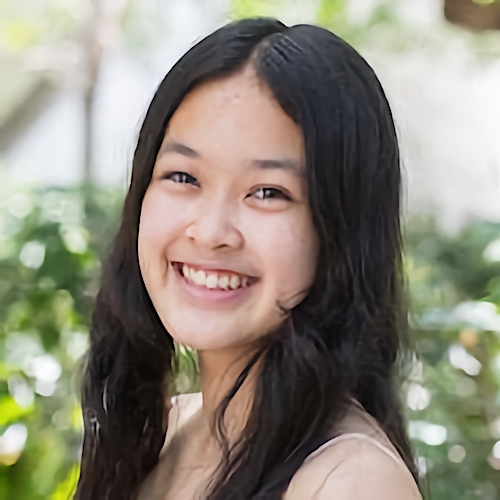
Taylor Kamemoto
My name is Taylor Kamemoto. I am a current pre-OT student and a senior at USC majoring in Psychology and the Health & Human Sciences. I also have minors in Occupational Science (a.k.a. best minor ever), and Musical Studies in Flute Performance! I am super excited to introduce the Pre-OT Club’s blog!
If you’re an undergrad interested in Occupational Therapy, you should definitely check out the Pre-Occupational Therapy Club! We are a club focused on spreading knowledge and awareness about the profession of Occupational Therapy here on the USC campus and even beyond our community walls. We have a wide range of club meeting topics, including inviting clinician guest speakers, hosting graduate student panels, social bonding events like game nights, philanthropy events such as gardening and food drives, and engaging in shared occupations together. These events allow club members to connect and find a sense of community with other Pre-OT students while enhancing our knowledge about the profession of OT. I have been involved since my freshman year (yes, we even had Zoom meetings during COVID) and I now serve as the current president.
So far, my favorite event this semester has been Craft Night! We worked directly with our club’s faculty advisor, Dr. Amber Bennett, who helped us reserve a space in the Center for Occupation and Lifestyle Redesign®. Dr. Bennett provided us with craft supplies such as wooden items to paint, ceramic piggy banks, scrapbook paper, and magazines. We had no guidelines and let our creative juices flow! We each created something unique. I used scrapbook paper to collage a picture frame and a clipboard. After an hour of crafting, we shared our projects with each other, and I was very impressed with what everyone created! I saw a box with a collage lid reading “Fight On,” a wooden “Statue of Liberty,” and fun collages. Check out our crafts below!
Email us at .(JavaScript must be enabled to view this email address) to be added to our newsletter and get more information about our club! You can also follow us on Instagram at @uscpreotclub. We are always looking for more undergraduate students interested in Occupational Therapy and anyone who appreciates the nature of occupations and meaningful activities. Fight on, and welcome to our blog!
⋯
16 Hour Flight to Hang Out With my Occupational Therapy Pen Pal ⟩
January 4, 2023, by Global Initiatives Team
Getting Involved International
By Jared Bague (he/him), OTD ’25
Edited by Christelli Carmona, Entry-Level Professional Master’s student
There is a certain charm and chaos that comes with the final days of the year — the simple change of a single digit after 365 days sends people into a frenzy of ending the calendar year living life to its fullest. I would be remiss if I didn’t admit that I too subscribed to this “final frenzy” by meeting up with my pen pal . . . that lives on the other side of the world.
In October of 2022, Global Initiatives announced that they were organizing a “Global Pen Pal Program” where they connected USC Chan students with other OT students from around the world. With OT schools spanning South Korea, Palestine, Poland, and more, the Global Initiatives team matched Chan students to OT schools abroad according to their interests found in their application. For me personally, I’ve always felt a deep calling to be a bridge for the dissemination of knowledge in a place where my roots run deep — the Philippines.
A few days after I submitted my application, I was overjoyed to see that I was paired with the University of Santo Tomas in Manila, Philippines. Even more so, I was excited to see that my roommate, Joseph Quiambao, was also paired with the same school. After we shared a few embarrassing cheers of excitement in our living room, I received my first email from my pen pal, Jose Maria Miguel Burgos (Miggy for short). We immediately began emailing back and forth introducing ourselves, which eventually evolved into direct messaging each other on Instagram, which eventually evolved into Zoom calls. Despite the 16-hour time difference, Miggy and I’s friendship grew quickly over the span of 2.5 months.
Prior to applying for the Global Pen Pals program, I was planning on taking my first international solo trip to spend New Year with my grandma in Sison, Philippines. In full honesty, the idea of navigating the stresses of international travel by myself was deterring me from following through with my plans. But after thinking about the possibility of having a once-in-a-lifetime opportunity to meet up with my pen pal, I knew I had to book the 15-hour flight. I pitched the idea to Miggy and Ray Torres (my roommate’s pen pal who I also got to know), and they were on board. After a few weeks of planning, we all settled on meeting up on December 28th.
It was only when I was surrounded by hundreds of balikbayan boxes (gifts that overseas Filipino families send home to the Philippines) at LAX that I realized how crazy of a plan this was. I began thinking to myself, “Jared, you just spontaneously booked a solo flight overseas to meet up with someone you had only seen the upper half of on Zoom.” But as the great philosopher, Drake, once said, “. . . you already know though. You only live once, that’s the motto.” With that song on repeat in my head for the entire duration of the flight, I finally touched down at Ninoy Aquino International Airport on December 27th.
At 7:00 am on December 28th, Miggy and his childhood friend, Raffy, picked me up from my hotel in Bonifacio Global City. We went on a short road trip to Tagaytay where they took me to their favorite food spot, and then we headed back towards Makati where we grabbed coffee, went sightseeing, and shopping.
Miggy experienced my first taste of “sinigang na baboy” and “puto bong bong,” which are Filipino dishes.
Our first stop in Tagaytay was this lookout point. Tagaytay is located an hour and a half outside of Metro Manila.
Apart from the amazing views, food, and shopping malls, the part that I enjoyed most was the conversations we had in our downtime. I got to learn a lot about Miggy — he is a big fan of Florence Clark and Erna Blanche, and he eventually wants to work in the mental health setting as a life coach, he and Ray Torres put on “Camp Kabahagi” which aims to enable children with disabilities through play, and so much more. While talking about our passion for OT, I was able to see how different yet similar the profession looks in our own respective experiences as OT students in different countries. We shared moments where we talked about Sensory Processing, therapeutic use of self, dysphasia, and other OT-related topics that sparked our interests. Overall, it was inspiring to witness OT students outside the United States sharing the same desire to make a difference in the world, one intervention at a time.
Going to Tagaytay was a special experience because Miggy and Raffy expressed how COVID has restricted them from leaving their houses too often.
The “final frenzy” that I experienced led to me gaining a deeper understanding of the global community that we, as future OTs, are a part of. It is easy to forget that there are OTs around the globe that share the same hopes and dreams that we do — I find it quite beautiful. Once we set sail in our curiosity to learn more about OT beyond the borders of our own country, we can experience an exchange of knowledge that propels the profession forward. This is in hopes that OTs around the globe can provide the best quality care that we can as future practitioners.
In regards to my pen pal, Miggy, I know this isn’t the last time I will see him. His dream is to eventually attend USC Chan to pursue his PhD but until then, I’ll make sure to make a stop in Makati whenever I find myself in the Philippines again.
⋯
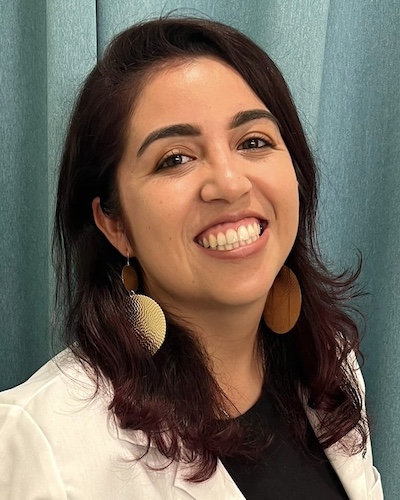
Latinx Heritage Month Celebration ⟩
November 29, 2022, by Tania
Community Diversity First-Gen Getting Involved
Asociación Hispanohablante de Terapia Ocupacional (AHTO) is a student organization in the Chan Division, with the goals to improve the educational experience of Latinx students and to provide care/resources to the Spanish-speaking community. We are a group of aspiring OTs passionate about working with underrepresented and underserved communities. AHTO hopes to support the retention of students of color within the division and to advocate for the needs that our community requires. AHTO is a student organization made by the students and for the students.
We all know the importance of representation in higher education and healthcare. Therefore, the AHTO board worked together to create several events in celebration of Latinx Heritage Month.
The first event was café con pan dulce, which allowed students to connect over some cafesito and conchitas. That same day during lunch students gathered to play Loteria, which is similar to Bingo.
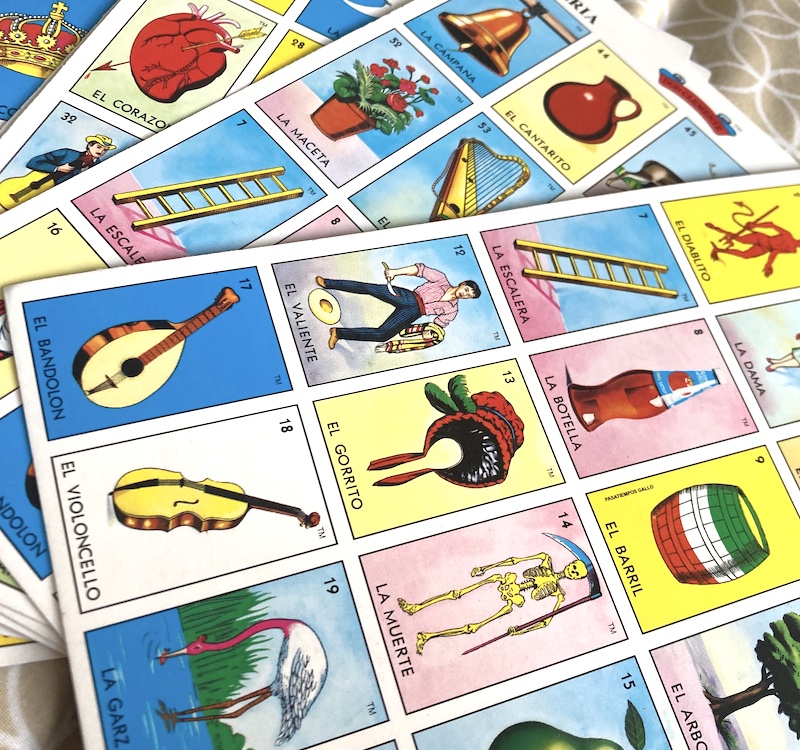
The next event was Case Studies en Español, and this event was made possible with the collaboration of Dr. Celso Delgado Jr.. Our two presenters, Dr. Marilyn Thompson and Dr. Daniel Padilla reviewed two different case studies in Spanish and provided tips on how to best serve the Spanish-speaking community.
We also had a social at a local Latinx-owned restaurant, Casa Fina Restaurant, to support businesses in the community. We enjoyed good food, good music, and great company. We had over 30 people at the event. It was beautiful to see so many people in one room building community.
We closed the celebration with Dia de Los Muertos. Students enjoyed tamales, pan dulce, and crafts.
AHTO hopes to create a safe space and a home away from home for those in the division. We understand that there have been other Latinx organizations before us that maybe have not lasted, but the fact that an organization keeps arising time by time lets us know the need for support in the division and the willingness of our community.
If you are a student and you are interested in getting involved, stay on the lookout for elections next semester!
If you are staff / faculty and wonder how you can best support our student group here are a few ways:
- Attend our events
- Promote our events
- Advocate for funding for student orgs
- Ask us what we need
Special thanks to Dr. Celso Delgado Jr. and Dr. Danny Park for their collaboration and support!
⋯

OT for a day! ⟩
October 31, 2022, by Tania
Diversity Getting Involved International
This month I had the opportunity to collaborate with another student organization on campus called Flying Samaritans. Flying Samaritans is an international volunteer organization that provides free health care for the underserved population in Tijuana, Mexico. The group meets on main campus and drives together to the border, parks on the US side, and then travels via taxi to a clinic in La Colonia Independencia in Tijuana, Mexico. I was very excited to participate in this project because I grew up in Tijuana, Mexico and having the opportunity to give back to my community feels amazing. I drove to the site and met the rest of the team there as the clinic was only a 10-minute drive from my parents’ house.
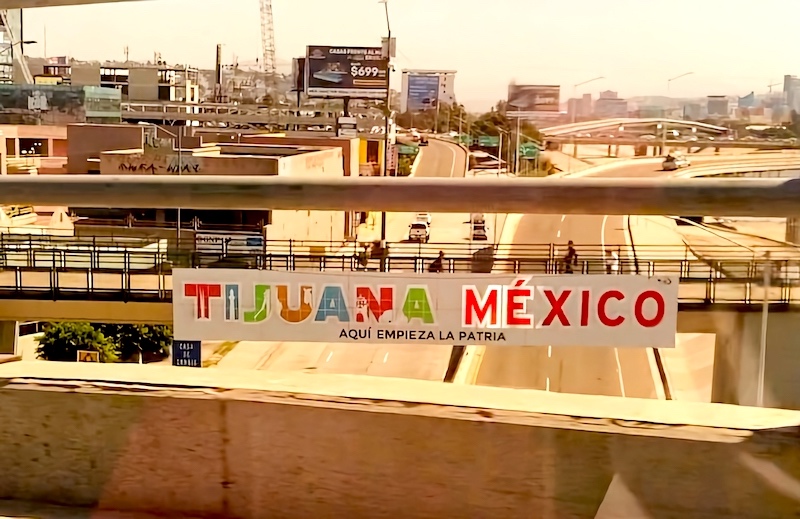
When I got there, I introduced myself to the volunteer group in Tijuana called Casa de Leones, which had partnered up with USC Flying Samaritans to run the free clinic. I helped set up tents, tables, and chairs for patients to sit in while they waited their turn for services. Patients first checked in and signed consent forms. Then they transitioned to the first room where undergraduate students will check their blood pressure, oxygen levels, insulin, height, and weight. Here, students will also collect patient history and ask questions regarding any concerns that brought the patient to the clinic. Patients will then transition to the second room to see a clinician for a general check-up and receive their free prescriptions. Finally, patients will meet with me to work on medication management, diabetes management, or lifestyle interventions.
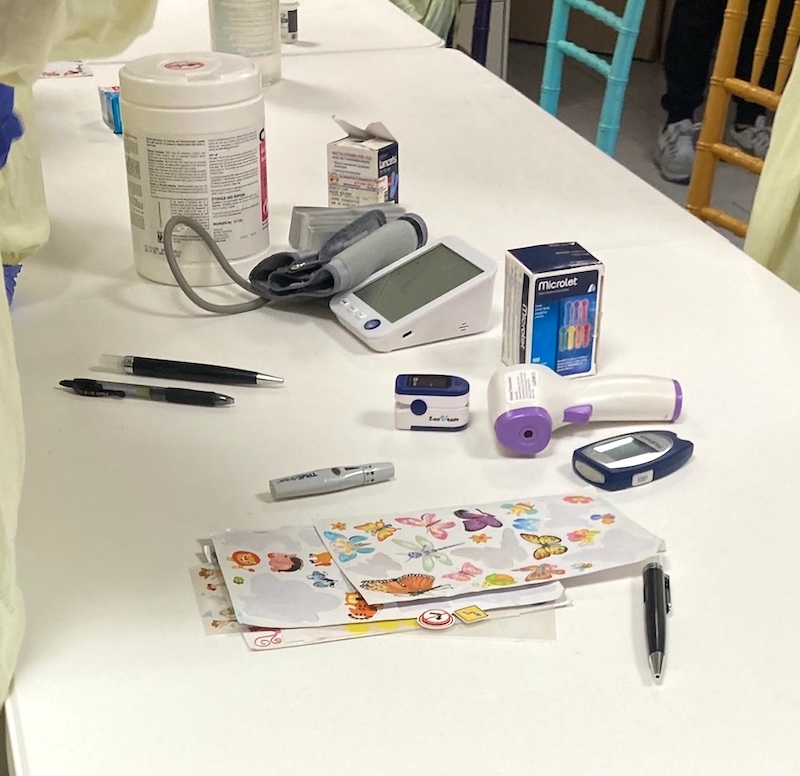
Some of them shared that it was very hard to remember and be consistent with medication. Therefore, I created an individualized plan for each patient. For some, using a pill box and labels seemed to be the best option while for others teaching them how to put cellphone reminders was the way to go. Many of them had been told in the past that they needed to exercise more. However, their idea of exercise only consisted of running or weights. We had discussions of what typical days looked like for each patient and together we planned movement throughout their days.
Some patients had been coming for months and shared that they look forward to clinic days. Flying Samaritans have done a great job building rapport and providing free services that allow individuals to manage their chronic conditions. Being the OT for that day was extremely rewarding. It allowed me to put my classroom learning into practice. Not only that, but I was able to be part of an interdisciplinary team where we put our knowledge together making the patients our priority.
If you are interested in being part of this volunteer opportunity, please email me at .(JavaScript must be enabled to view this email address). You do not need to be fluent in Spanish and the team could always use more people. The next free clinic is on November 12th!

⋯






